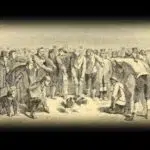St. Maroun Day in Lebanon is on February 9, and we’re here to help you observe the day in the best way possible. Do you know that it has been more than 300 years since the grand feast of St. Maroun was first celebrated? St. Maroun Day is a tribute to a great saint and spiritual leader who spread the word of Christ to all people he met. St Maroun was guided by his spiritual and ascetic methods of worship and gained many followers in his lifetime.
History of St Maroun Day
The exact date of St. Maroun’s birth is not known. There have been records suggesting that he was born around 300 B.C. in modern-day Syria. St. Maroun was a constant seeker of wisdom repelling any ordinary practices. He famously believed that every person and everything has a connection to God and God was connected to everything.
St. Maroun exposed himself to the sun and the harshest of weather (rain, hail, and snow) through which his prayers and meditations were conducted. He transformed his pagan temple into a church for Christians. St. Maroun was a saint of great passion for his methods and believed in aiding those who were helpless and needed guidance. His guidance and practices evidently succeeded and thus gained him more followers all over the region of Cyr.
Later in his life, he became a hermit and moved to a place near the ancient city of Antioch called the Taurus Mountains in Cyrrhus. He moved to the hills in pursuit of tranquility and religious discipline. The death of St.Maroun is unspecified and some people believed it to be between 407 B.C. and 423 B.C. in Arethusa. Other people suggest that Brad village is the place of his burial.
The Maronite Church proclaimed Feast Day in honor of the consecration of the church of Kfarhay for the saint. Initially, it was celebrated in January but in the seventeenth century, the date was shifted to February 9. Since then Sts Maroun Day has been celebrated on February 9 to honor the great saint and the father of the monastic movement, Sts Maroun.
St Maroun Day timeline
St. Maroun is born in modern-day Syria.
St. Maroun becomes a hermit and moves to the Taurus Mountains.
St. Maroun passes away and the Maronite Church is established in his honor.
Feast day is announced by the Maronite Church and takes place on February 9, and St. Maroun's Day is created.
St Maroun Day FAQs
Is St. Maron the same as St. Maroun?
Yes. Maroun, Maron, Marun, and Maro are different names for St. Maroun. The change in spellings arises due to the difference in pronunciation in different languages.
Who is known as the first Maronite Patriarch?
John Maron, also known as Youhana Maron was a Syrian monk who was known as the first Maronite Patriarch. He was born in Sarmin in 628 A.D.
What is the significance of the Maronite cross?
The Maronite cross is a three-barred cross, which symbolizes the Maronite Patriarchal Synod — the regular assembly of Maronite Patriarchs, Eparchs, and the high Maronite ecclesiastical figures. The Eparchy is the administrative unit of the Maronite Christian Church.
How to Observe St Maroun Day
Learn more about St. Maroun
St. Maroun was a great saint and spiritual leader who changed and shaped the way monastic churches worked. He helped hundreds and guided those who were lost. Use this to read more about him and his legacy.
Share it on social media
Let everyone know the importance of this day. Make a social media post on the facts and stories you read about St. Maroun and share them on your social media page. The idea is to let as many people as possible know about this great day.
Visit a Maronite cathedral
The original Maronite Church is in Lebanon. However, there are many Maronite cathedrals around the world, for example, St. Maroun's Cathedral in Sydney. You can either visit one of the St. Maronite churches or the church you go to regularly.
5 Facts About St. Maroun That Will Blow Your Mind
He initiated the Monastic Movement
He is known as the father of the Monastic Movement.
He spent his life on Kefar-Nabo
It is said that St. Maroun spent his final days at Kefar-Nabo, a place in the Taurus Mountains.
He believed a Khoury could marry
St. Maroun did not separate physical and spiritual life and believed that a Khoury (priest) could marry.
He healed lost souls
St. Maroun did not just heal the ones who were physically sick but also guided lost souls spiritually.
His first disciple was Abraham of Cyrrhus
Known as the Apostle of Lebanon, Abraham of Cyrrhus was St. Maroun's first disciple.
Why St Maroun Day is Important
It gives us a chance to know more about this great saint
St. Maroun was no ordinary priest. His new way of spreading the word of Christ, broad-minded outlook on the physical and spiritual life, and healing those in need gained him immense popularity. This day allows us to know more about St. Maroun.
It is an opportunity to open up our spiritual side
This day calls for deep introspection, self-reflection, and invoking the spiritual being in all of us. St. Maroun was a saint who made it his life's purpose to heal people physically and spiritually. This day is the perfect opportunity to do some inner work.
It allows us to expand our knowledge of history
As we read the story of St. Maroun, many associated events and stories that took place parallelly, unfold. This is a great day to expand our knowledge of historical events and their significance.
St Maroun Day dates
| Year | Date | Day |
|---|---|---|
| 2025 | February 9 | Sunday |
| 2026 | February 9 | Monday |
| 2027 | February 9 | Tuesday |
| 2028 | February 9 | Wednesday |
| 2029 | February 9 | Friday |





























